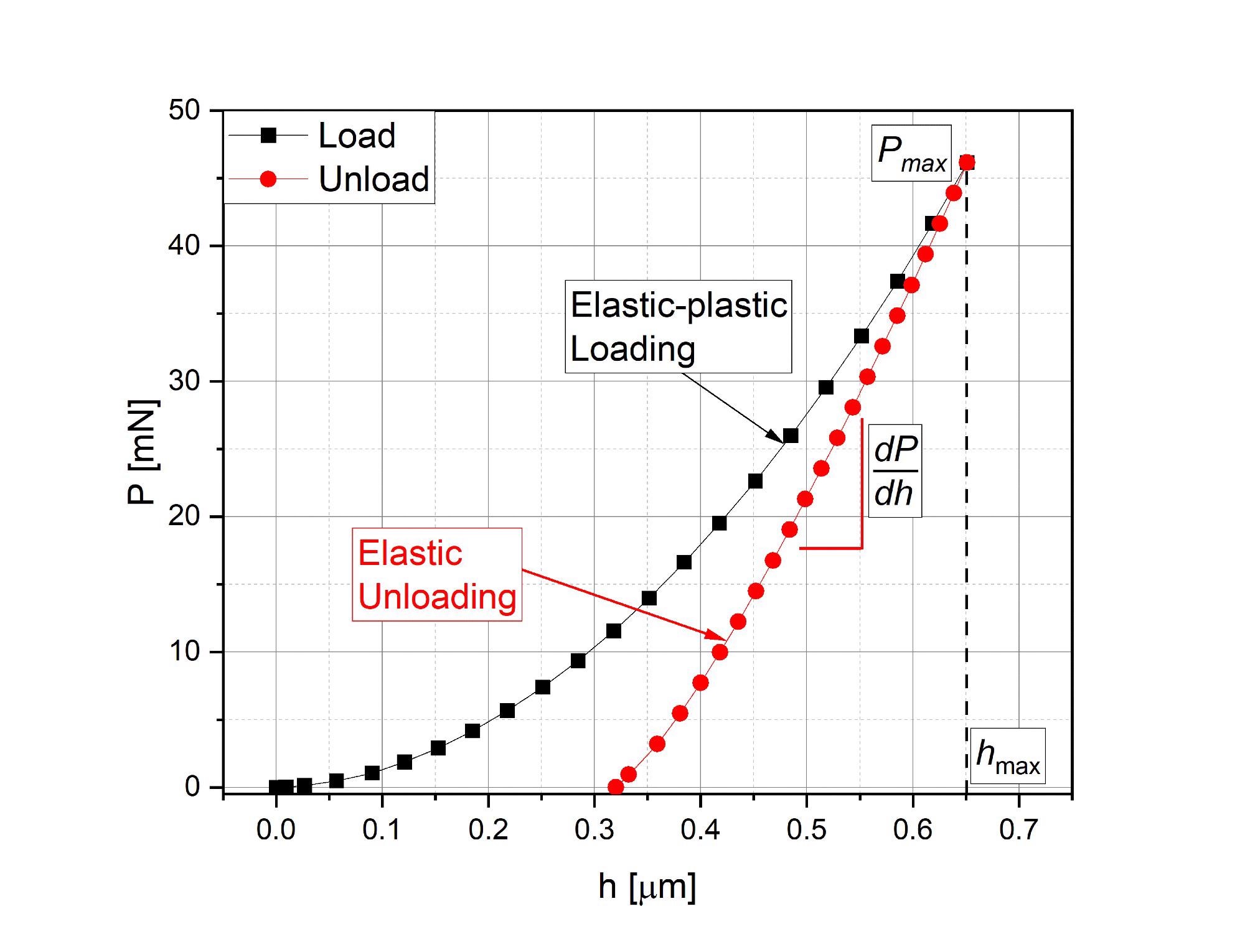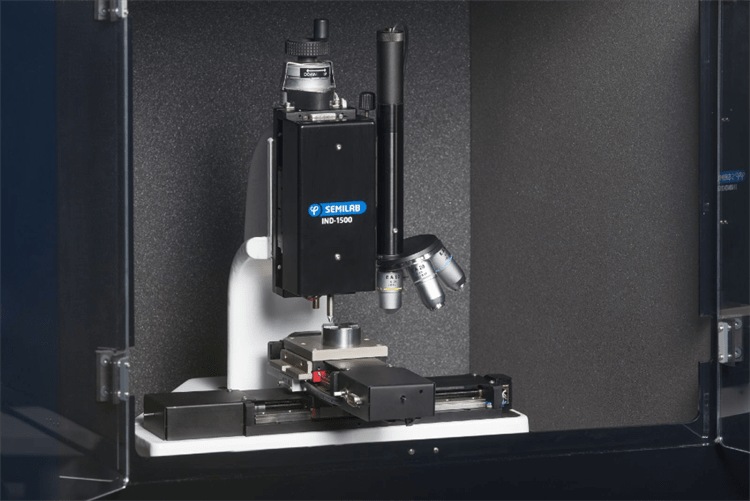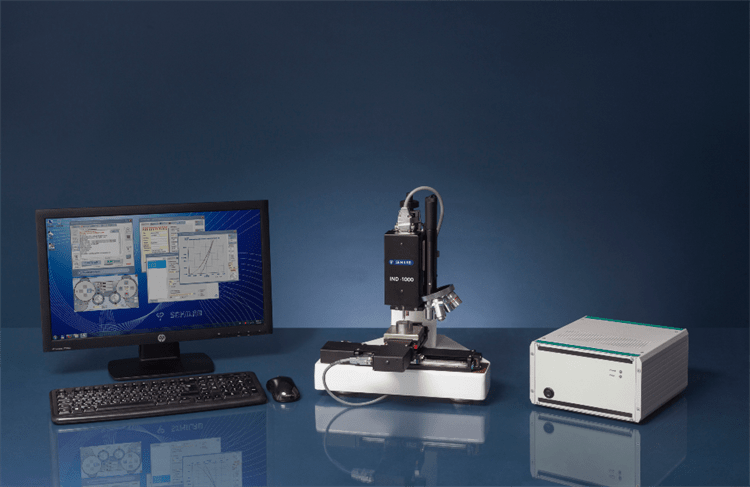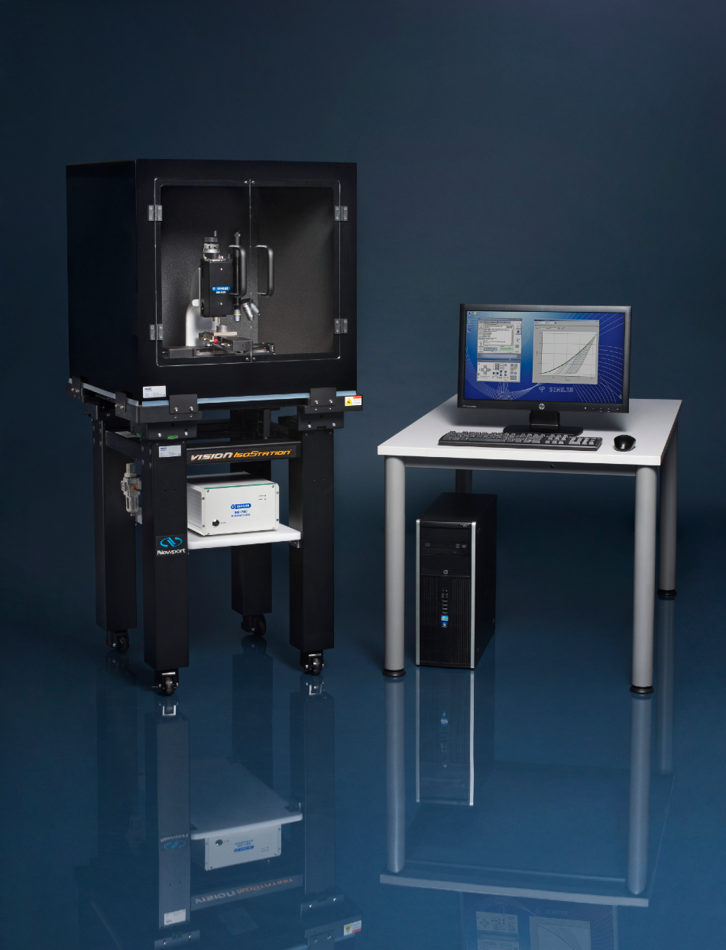The quantitative mechanical properties of small volumes of materials can be determined with the help of nanoindentation. At present, this technique is an established process to determine the elastic, plastic, and viscoelastic properties of materials like semiconductors, ceramics, soft films, biological materials, multi-phase metals, hard thin films, and plastics from the micro-scale to the nanoscale.
Nanoindentation
A nanoindentation test provides accurate load-displacement curves for testing on both soft and hard surfaces, including rough surfaces like those made by industrial processes such as thermal spray coatings, by quantitative measurement of the mechanical characteristics of small volumes of materials.
The main applications of these instruments are thin films, biological materials, ceramics, multi-phase, metals, etc. But they can also be applied for viscoelastic measurements of polymers, flexure testing of MEMS, and any application that necessitates mechanical measurement on the sub-micron scale.
Hardness, elastic modulus, and yield strength are the main materials properties measured. Based on the sample, storage and loss moduli, fracture toughness, and scratch and wear properties are also measured
.
Nanoindentation Tester
The IND-1500 instrument incorporates additional features of the IND-1000 and has been designed to convey a controlled load and deformation of the material under test. The mechanical response of the material is quantified by using force and displacement sensors. The range and resolution of the actuator and the force and displacement sensors are extremely small (in the range of mN and μm with nm and nN resolution).
The high precision of the measurement enables recording of events on the micro-scale to the nanoscale. This allows interpreting and explaining macro-scale damage by events on the sub-micron scale, thereby enabling investigation and customization of the basic properties of the sample for specific applications.

Integrated with the additional features of the IND-1000, the IND-1500 makes use of powerful LVDT sensors for force and depth measurements. In this state-of-the-art package, AC amplification provides a μV noise floor. Exclusive circuitry ensures balancing of the signal to leverage the entire range of the analog-to-digital interface.
Features
- High-resolution depth profile for Young’s modulus and hardness
- Dynamic and static measurement modes
- AFM on the same Z-axis (optional)
- Additional optical microscope provided on the same Z-axis
- Integrated with scratch tester
- Software integration with finite element analysis software
The use of LVDT measurement sensors for nanoindentation applications was pioneered by CSIRO in the late 1980s. From that time, with more experience, the technique has been well established, offering low-noise sub-nanometer resolution in a highly robust package.
When compared to competitor instruments that use a capacitance sensor, the IND system is virtually resistant to mechanical breakage due to overloading of the indenter shaft. This is because the indenter shaft directly passes through the sensor and can withstand unintentional deflection of several millimeters without any damage.
The force sensor is completely insulated from the load actuator and directly measures the force applied to the indenter, without any signal subtraction from support springs. The depth and force sensors are calibrated individually against international standards. Closed-loop feedback from the force sensor or the depth sensor can be selected. For high-speed data acquisition, users can even choose the open-loop operation mode.
Advantages of IND-1000
- Technology developed based on Fischer-Cripps Laboratories’ effective nanoindentation system
- Robust design withstands considerable overuse
- PZT expansion element with excellent quality, without heat generation
- Measured material properties include hardness, fracture toughness, yield strength, elastic modulus, scratch and wear properties (based on the sample), as well as storage and loss moduli
- Periodic calibration not needed
- Closed-loop force/depth feedback
- Highly linear response LVDT and sub-nanometer depth resolution
- Traceable calibration
- Real-time feedback control over application of depth- or load-independent force and displacement measurement
- Reliable performance for several years
- Almost resistant to mechanical breakage when compared to competitor devices
- Low compliance load frame, mountings and enclosure
- Easily exchangeable indenter tip
- Precise positioning of the sample ensured by video microscope and automated X-Y-Z-movement

Optional Features
- Lateral force (Scratch Testing Module)
- Atomic force microscope
- Integrated finite element analysis module
IND-1500 Benefits
- Improved vibration discharge
- Enhanced voice isolation
